Tamibarotene
Synonym(s):AM80;Amnoid;AMNOLAKE;N-(5,6,7,8-Tetrahydro-5,5,8,8-tetramethyl)-2-naphthyl)terephthalamic acid;N-(5,6,7,8-Tetrahydro-5,5,8,8-tetramethyl-2-naphthyl)terephthalamic acid
- CAS NO.:94497-51-5
- Empirical Formula: C22H25NO3
- Molecular Weight: 351.44
- MDL number: MFCD00866188
- EINECS: 1806241-263-5
- SAFETY DATA SHEET (SDS)
- Update Date: 2024-11-19 23:02:33
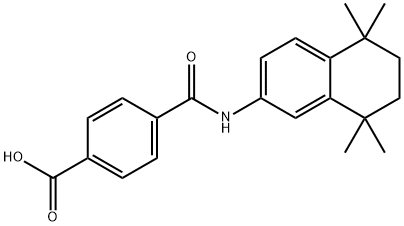
What is Tamibarotene?
Description
Tamibarotene, a selective agonist of the retinoic acid receptor, was launched in Japan as an oral treatment for relapsed or refractory acute promyelocytic leukemia (APL). APL is a form of acute myeloid leukemia (AML) characterized by a deficiency in mature blood cells and an excess of immature cells called promyelocytes in the bone marrow and peripheral blood. The current standard of care for APL includes treatment with all-trans-retinoic acid (ATRA), either alone or in combination with chemotherapy. ATRA is a high affinity ligand for two types of nuclear receptors, retinoic acid receptor (RAR) and retinoid X receptor (RXR), each of which has three subtypes (-α, -β, and -γ). Activation of RARα by ATRA causes promyelocytes to differentiate and mature, thereby inhibiting their proliferation and inducing disease remission. Although ATRA is one of the most clinically successful retinoids, its usage is hampered by the high rate of adverse effects, instability, and the appearance of ATRA-resistant leukemia cells.Adverse events included retinoic acid syndrome, hyperleukocytosis, xerosis, cheilitis, hypertriglyceridemia, and hypercholesterolemia; however, these side effects were generally milder than with ATRA, which all patients had received previously. Examination of human samples taken from Phase II and III clinical trials revealed that fecal excretion was the major elimination route, and the metabolism of tamibarotene occurred primarily through hydroxylation and taurine conjugation. In vitro, the plasma protein binding of tamibarotene is shown to be >98% in rats, dogs, and humans. Tamibarotene is synthesized from 5,5,8,8-tetramethyl-5,6,7, 8-tetrahydronaphthalene in a four-step sequence consisting of regioselective nitration in the 2-position, reduction of the nitro group by hydrogenation to produce the corresponding aniline derivative, acylation of the aniline intermediate with 4-(carbomethoxy)benzoyl chloride, and hydrolysis of the methyl ester.
Description
AM80 is a retinoic acid receptor agonist that is selective for RARα (Kd = 62 nM; AC50 = 1.46 nM) compared to RARβ (Kd = 280 nM; AC50 = 6.87 nM) and RARγ (Kd = 816 nM; AC50 = 148.7 nM). It demonstrates greater specific binding to RARα compared to retinoic acid , which exhibits little selectivity across RARα, β, or γ. AM80 exhibits antiproliferative effects against acute promyelocytic leukemia cells, inducing human promyelocytic leukemia HL-
Chemical properties
Crystalline Solid
Originator
Toko Yakuhin Kogyo (Japan)
The Uses of Tamibarotene
Tamibarotene, a retinoic acid receptor-α(RARα) agonist, was approved for the treatment of relapsed or refractory acute promyelocytic leukemia (APL) in Japan on June, 2005 and is currently marketed by Nippon Shinyaku Co. This novel drug has shown high remission rate among patients who have recurrent disease after all trans retinoic acid therapy.
The Uses of Tamibarotene
Synthetic retinoic acid receptor-a/?selective retinoid. Antineoplastic
The Uses of Tamibarotene
Synthetic retinoic acid receptor-α/β-selective retinoid. Antineoplastic.
The Uses of Tamibarotene
A RARα agonist that induces differentiation and apoptosis
What are the applications of Application
AM 80 is a RARα agonist that induces differentiation and apoptosis
Definition
ChEBI: A dicarboxylic acid monoamide resulting from the condensation of one of the carboxy groups of terephthalic acid with the amino group of 5,5,8,8-tetramethyl-5,6,7,8-tetrahydronaphthalen-2-amine.
brand name
Amnolake
Biological Activity
Retinoic acid receptor α (RAR α ) agonist that induces differentiation (ED 50 = 0.79 nM) and apoptosis of HL-60 cells in vitro . Exhibits antiproliferative effects against a variety of human tumor cells lines (mean values of 35, 40 and 60% growth inhibition at 0.1, 1 and 10 μ M respectively) and displays anticancer activity against acute promyelocytic leukemia in vivo .
Biochem/physiol Actions
Tamibarotene (Am80) is a RAR α agonist. Tamibarotene was developed to overcome resistance to ATRA and is currently approved in Japan for treatment of recurrent acute promyelocytic leukemia (APL). The compound induces HL-60 cells differentiation and apoptosis. Similarly to TTNPB, the compound neither binds to nor transactivates the RXRs. In contrast to TTNPB (pan RAR agonist), Tamibarotene is rather specific toward RAR α. The compound is approximate 10 times more potent than ATRA.
Synthesis
Several synthesis of tamibarotene have been disclosed in the literature including the process scale synthesis as shown in the scheme. The synthesis started with preparation of dichloride 134 in 82% yield from diol 133 by treating with concentrated HCL in DCM. Friedal Crafts reaction of dichloride 134 with acetanilide in the presence of aluminum chloride at -15??C for 2h provided acetanilide derivative 136 in 78% yield. In a single pot, the acetanilide was reacted with PCl5 and dimethylaniline at -25??C for 1.5h followed by quenching the reaction with methanol for 2h after addition at -25??C. Addition of dimethylaniline and terepthalic chloride mono-methylester at -30 - - 20??C for 1 hr provided the tamibarotene methyl easter 137 in 81% yield. Hydrolysis of the ester by heating with sodium hydroxide in MeOH:water mixture for 1h followed isolation and crystallization gave tamibarotene (XIX) in 92% yield.
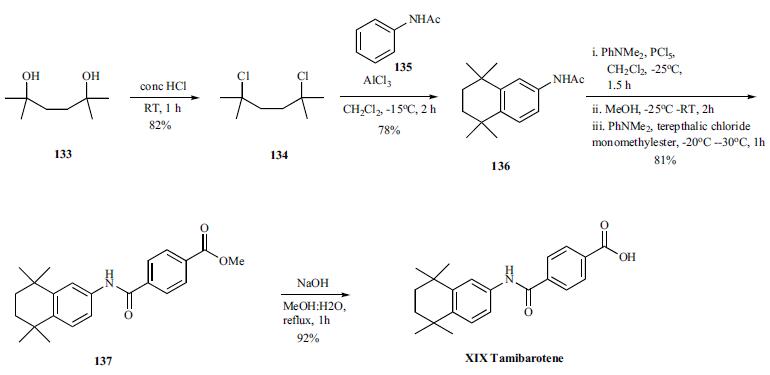
storage
Store at RT
Properties of Tamibarotene
| Melting point: | 231-232°C |
| Boiling point: | 449.6±45.0 °C(Predicted) |
| Density | 1.154±0.06 g/cm3(Predicted) |
| RTECS | DH6940000 |
| storage temp. | room temp |
| solubility | Soluble to 50 mM in DMSO |
| pka | 3.83±0.10(Predicted) |
| form | powder |
| color | white to off-white |
Safety information for Tamibarotene
Computed Descriptors for Tamibarotene
Tamibarotene manufacturer
New Products
(S)-3-Aminobutanenitrile hydrochloride 4-Methylphenylacetic acid N-Boc-D-alaninol N-BOC-D/L-ALANINOL Tert-butyl bis(2-chloroethyl)carbamate N-octanoyl benzotriazole 3-Morpholino-1-(4-nitrophenyl)-5,6-dihydropyridin- 2(1H)-one Furan-2,5-Dicarboxylic Acid S-2-CHLORO PROPIONIC ACID ETHYL ISOCYANOACETATE 2-Bromo-1,3-Bis(Dimethylamino)Trimethinium Hexafluorophosphate 4-IODO BENZOIC ACID 3-NITRO-2-METHYL ANILINE 1-(2,4-DICHLOROPHENYL) ETHANAMINE (2-Hydroxyphenyl)acetonitrile 4-Bromopyrazole 5,6-Dimethoxyindanone 2-(Cyanocyclohexyl)acetic acid 4-methoxy-3,5-dinitropyridine 1-(4-(aminomethyl)benzyl)urea hydrochloride 2-aminopropyl benzoate hydrochloride diethyl 2-(2-((tertbutoxycarbonyl)amino) ethyl)malonate tert-butyl 4- (ureidomethyl)benzylcarbamate Ethyl-2-chloro((4-methoxyphenyl)hydrazono)acetateRelated products of tetrahydrofuran

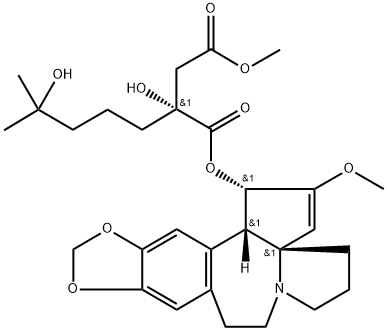
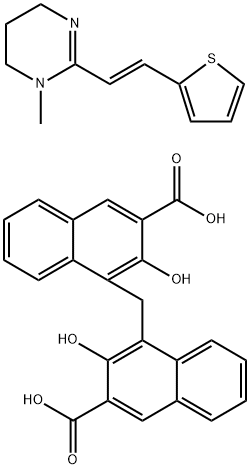

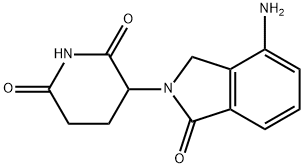

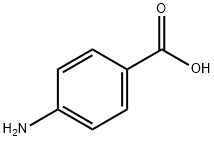

You may like
-
 Tamibarotene 97% CAS 94497-51-5View Details
Tamibarotene 97% CAS 94497-51-5View Details
94497-51-5 -
 Tamibarotene CAS 94497-51-5View Details
Tamibarotene CAS 94497-51-5View Details
94497-51-5 -
 1975-50-4 98%View Details
1975-50-4 98%View Details
1975-50-4 -
 2-HYDROXY BENZYL ALCOHOL 98%View Details
2-HYDROXY BENZYL ALCOHOL 98%View Details
90-01-7 -
 2-Chloro-1,3-Bis(Dimethylamino)Trimethinium Hexafluorophosphate 221615-75-4 98%View Details
2-Chloro-1,3-Bis(Dimethylamino)Trimethinium Hexafluorophosphate 221615-75-4 98%View Details
221615-75-4 -
 61397-56-6 CIS BROMO BENZOATE 98%View Details
61397-56-6 CIS BROMO BENZOATE 98%View Details
61397-56-6 -
 14714-50-2 (2-Hydroxyphenyl)acetonitrile 98+View Details
14714-50-2 (2-Hydroxyphenyl)acetonitrile 98+View Details
14714-50-2 -
 118753-70-1 98+View Details
118753-70-1 98+View Details
118753-70-1